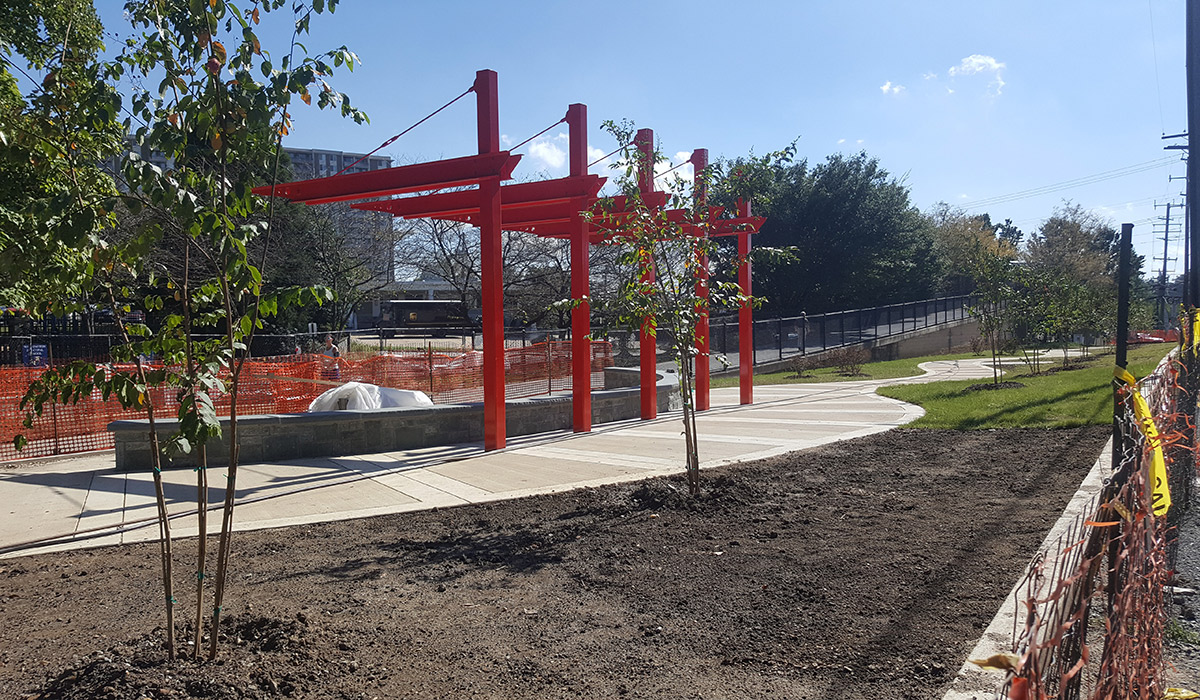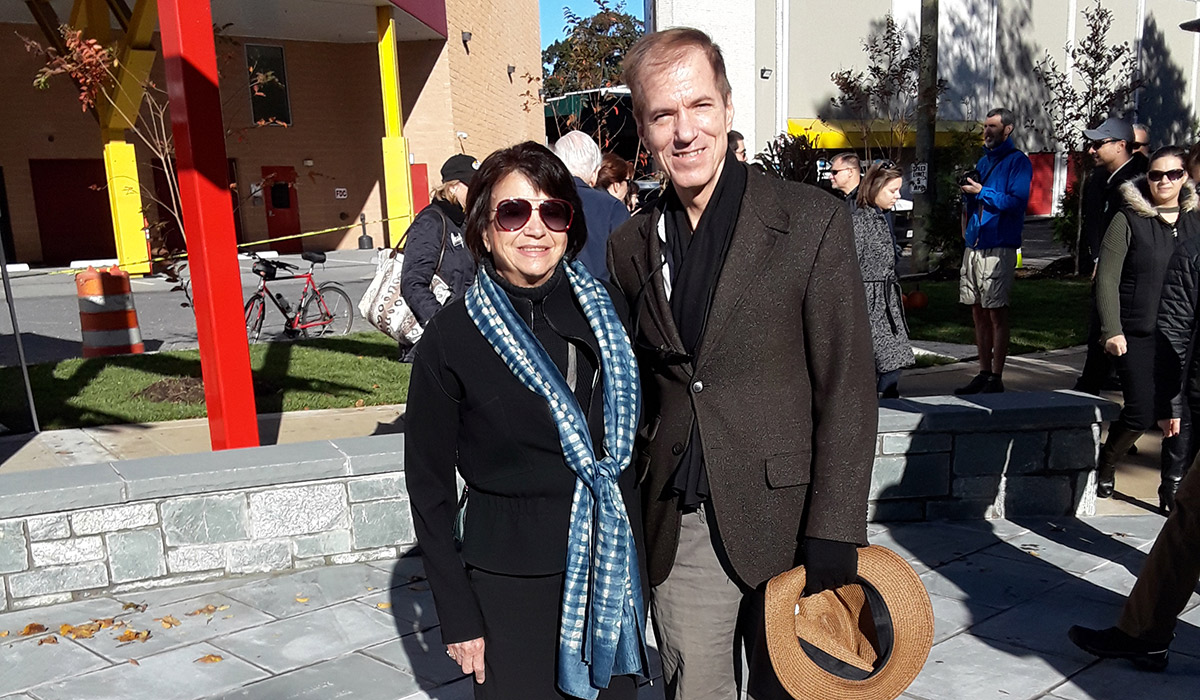

Cyclists along the 11-mile Capital Crescent Trail in Bethesda, Md., have a new place to rest and relax thanks to a recently dedicated park that was initially envisioned by Catholic University architecture students and their professor more than 10 years ago.
The Neal Potter Plaza, which was dedicated earlier this month, is based on the designs of students who participated in a Catholic University Urban Design studio in 2006 and 2007, including David Hathcock and Constance Stubbs, as well as their professor, Iris Miller, ASLA, M.Arch., who graduated from the School of Architecture in 1979.
The major features in the plaza, which is located at the base of a bridge where the Capital Crescent Trail intersects with River Road, are benches and stone sitting walls, a new curving pathway, a red “gateway” metal pergola, bike racks, a repair station, and a three-paneled display with trail information. The park also includes a commemorative plaque honoring Neal Potter, who was a former Montgomery County Executive as well as a long-time county council member.
The park is the result of a partnership among Montgomery Parks, Montgomery County, the Montgomery Parks Foundation, and the Coalition for the Capital Crescent Trail. Its design dates back to 2006, when county officials asked Miller and students from her Urban Design Studio to begin working on a design proposal. After the students graduated, Miller became the primary designer, meeting often with county officials, engineers, and consultants to find solutions to any and all budgetary, topographic, and design issues.
“I’ve had to testify at the county council and other places,” Miller said. “It was an extensive and exciting process.”
Over time, the park became a project close to Miller’s heart. Each week during construction, she would go to the park to take photos of the progress.
“The design is top quality and, except for a change in benches they used, it’s basically the same as our design,” Miller said. “I went back to look at the students' drawings and the concept follows the general schematic ideas of their original proposal. It’s a place for people on the trail to stop, relax and rejuvenate, have some water or a lunch, or sit and meditate.”
Over the years as part of the design studio, Miller and her students have worked with communities around the Washington, D.C., area, including in Brookland, Anacostia, Shaw, the Georgetown Waterfront, and the areas surrounding George Washington University and the John F. Kennedy Center for the Performing Arts.
While other design work from Catholic University students has influenced real-world architecture, this park is the first time that a complete project from the studio has come to fruition in this way, Miller said.
 A dedication ceremony for the park took place Nov. 3 and was attended by numerous Montgomery County and Maryland state officials, as well as Miller and Architecture Dean Randall Ott.
A dedication ceremony for the park took place Nov. 3 and was attended by numerous Montgomery County and Maryland state officials, as well as Miller and Architecture Dean Randall Ott.
“It is always heartwarming to know of student projects that were the foundation for something later accomplished through the political and professional process,” said Steven Hurrt, a professor at the University of Maryland School of Architecture who previously served as director of the Catholic University School of Architecture and Planning summer program. “I have always thought this was among the best services that schools could provide to communities. And it's nice to see it.”
Miller shared a quote from her son Skip, who said it “must feel so good to know how much joy so many people will get out of [the park] for years and years to come.”
As for Miller, she called the dedication “a tribute to persistence on the part of those who believed in the vision over the years, and a tribute to the quality of students and faculty at Catholic University, especially in the School of Architecture and Planning.”